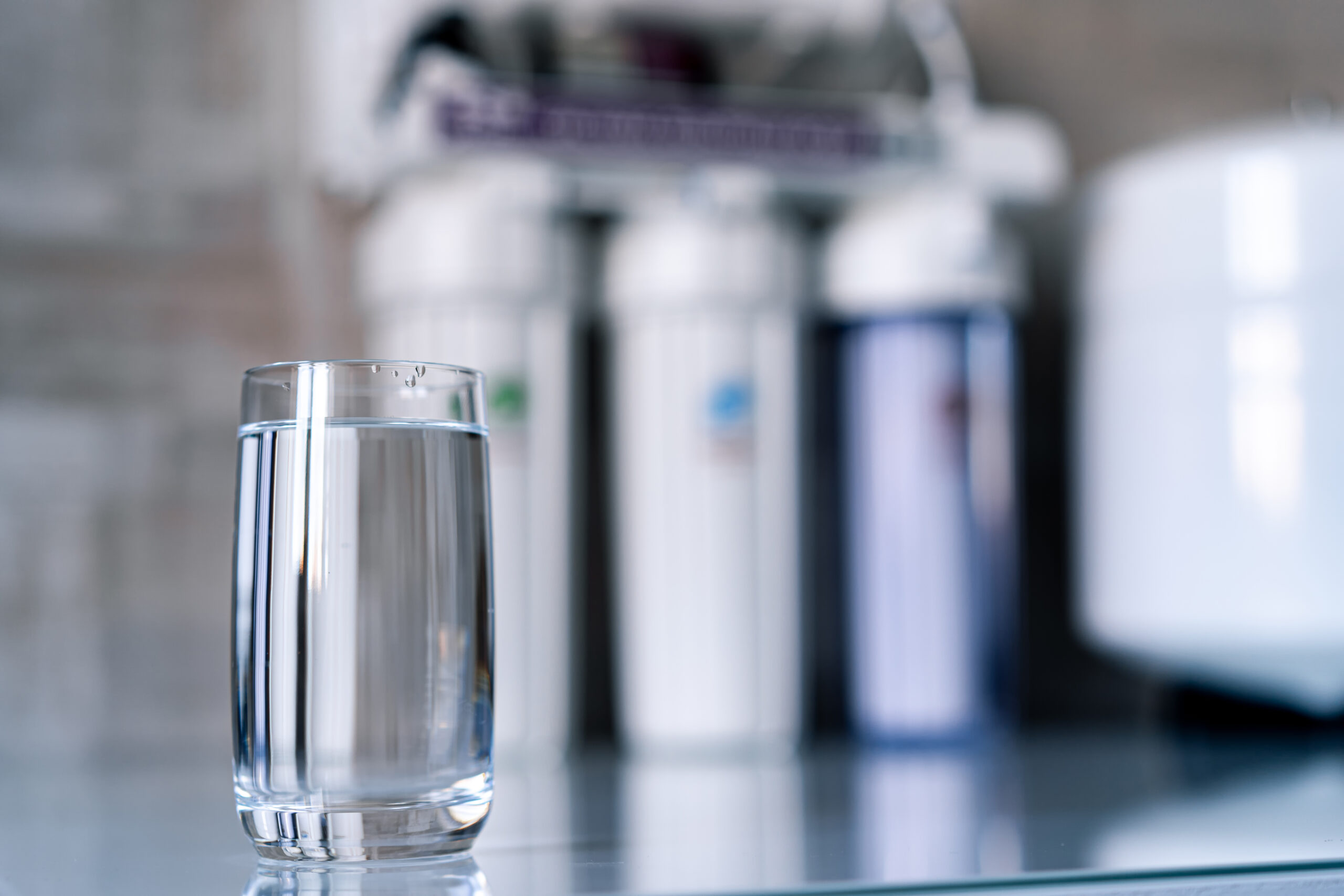Throughout my career as a chemical engineer and an avid saltwater aquarium enthusiast, both for over 30 years, I’ve delved deep into the nuances of water quality, particularly focusing on the purity essential for both human consumption and the thriving of delicate marine ecosystems.
I’m often asked the question: “Is RO water safe to drink?”. So let’s get right to the point: YES, RO water is perfectly safe to drink, however, be there are some facts to consider. This purification method excels at removing a wide array of contaminants, including bacteria, viruses, heavy metals, and chemicals, producing water that’s clean and conducive to our health. Although RO water may be low in minerals, this aspect does not compromise its safety for drinking. For those concerned about their mineral intake, reintroducing essential minerals into RO water is a straightforward and effective solution. For an in-depth look at the best RO systems for your home, some of which include Re-mineralization steps, check out our detailed review on the “Best RO Systems for Home”.
Understanding RO Water
RO water emerges from a sophisticated purification process that filters out undesired substances by forcing water through a semi-permeable membrane. This technology is not just pivotal for ensuring the safety of our drinking water; it also plays a crucial role in maintaining the health of saltwater aquariums, requiring water of the highest purity. Typically, RO water exhibits a slightly acidic pH, usually between 5 and 7, owing to the removal of minerals and dissolved solids. However, re-introducing minerals back into RO water is easily done. I’ll write a separate post on the best RO systems for the home along with how to add essential minerals back in our next publication.
The Safety of Drinking RO Water
From a chemical engineering standpoint, I assure you that RO water’s safety is beyond question. It’s exceptionally effective at purifying drinking water, removing a spectrum of contaminants that pose health risks. The process slightly reduces the water’s mineral content, leading to a mildly acidic pH. However, the advantages of consuming clean and safe water far outweigh the minimal impact of this mineral reduction.
RO vs. RODI vs. Distilled Water
What is RODI Water?
You may have heard of RODI systems, so what are they? In my many years of experience with saltwater aquariums, I’ve consistently relied on RODI (Reverse Osmosis Deionized) water for its unparalleled purity. RODI systems enhance the reverse osmosis process with a deionization stage, eliminating virtually all mineral ions and taking the water to 0 TDS (Total Dissolved Solids). TDS measures the combined content of all inorganic and organic substances contained in a liquid in molecular, ionized, or micro-granular suspended form. Essentially, a TDS of 0 indicates that the water is free of dissolved particles, making it exceptionally pure but also devoid of minerals. This ultra-pure water is ideal for sensitive marine life in aquariums but requires careful consideration for daily drinking due to its lack of minerals.
What is Distilled Water?
Similar to RODI, distilled water undergoes a process—boiling followed by condensation—to remove impurities and minerals, often resulting in a TDS close to 0. Like RODI and RO water, distilled water can be slightly acidic, especially when exposed to air as it absorbs carbon dioxide, forming carbonic acid. While safe for drinking, the absence of minerals in distilled water means it shares the potential drawbacks of RODI water, such as a lack of essential minerals and a flat taste.
Comparing for Drinking Purposes
For everyday drinking, RO water offers a palatable balance between purity and taste, retaining a slight mineral presence that enhances its flavor. Meanwhile, the ultra-purity of RODI and distilled water, with their 0 TDS, might be overkill for daily hydration needs, though they serve specific purposes, such as in my aquarium hobby, where water quality can affect the health of marine life.
Pros and Cons of Drinking RO Water
The debate on drinking RO water often centers on its mineral content and pH level. While the purification process ensures safety by removing harmful contaminants, it also lowers the water’s mineral content and can slightly acidify it. However, the benefits of accessing clean, safe water are undeniable. Fortunately, the slight acidity of RO water—a reflection of its purity—is a minor issue that can be easily addressed.
Enhancing RO Water for Drinking
Enhancing RO water for drinking involves simple steps, such as adding a remineralization stage to your system. This not only improves the water’s taste but also ensures it contributes beneficially to your mineral intake. Regular system maintenance further guarantees the longevity and efficiency of your RO system, providing consistently pure and safe water.
Final Thoughts
Navigating the choices for drinking water, RO water emerges as a preferred option for its balance of safety and practicality. RO water, despite its slightly acidic pH and reduced mineral content, represents a safe, clean choice for hydration. When considering water for drinking, it’s essential to weigh purity against mineral content, aiming for a solution that meets both safety standards and nutritional needs.
Thanks for following Trustworthyhomeadvice.com, please let us know your thoughts on drinking RO water in the comments.




